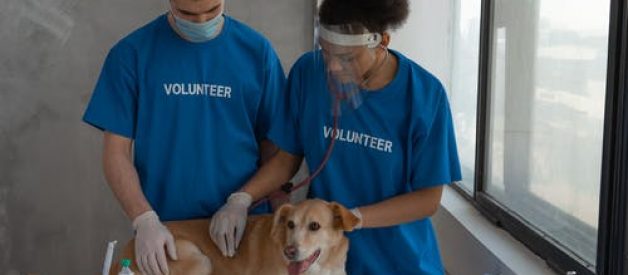Among the veterinarians’ most common clinical conditions is oral pet condition, generally referred to as gum illness. When you consider that most adult canines and felines show indicators of the disease when they enter the age of three, this is not a surprise. Pet oral ailment can lead to pain, missing teeth, infection, and even damage to important organs if left neglected. So, what are the stages of it?
What Are Animals’ Periodontal Ailment Stages?
Plaque film and tartar (hardened plaque) accumulate on the teeth above and below the periodontal line, resulting in gum disease in animals. The periodontal ailment can cause substantial pain, dental infection, bone and tooth loss, and systemic harm when neglected. Oral disease in animals can be classified into four phases:
1. Gingivitis Stage
Gingivitis, swelling of the gums caused by the appearance of tartar and microorganisms, characterizes this onset. You may see some swelling in your gums. A pale red line on the periodontal near the teeth may appear during this stage. This accumulation irritates the gum cells and encourages germs to thrive.
It leads to damage to the teeth’s supporting cells, including the gums and the fibrous connective tissue that joins the roots of the teeth to the adjacent alveolar bone. Suppose you want professional assistance and learn more about pet dental care and treatment procedures. In that case, you have to contact a vet in your area.
2. Early Periodontitis Stage
This stage happens when just a small level of bone loss is seen on dental radiographs, less than 25%. You might notice periodontal swelling, poor breath, and visible plaque and tartar on your pet’s teeth. Your animal will require expert cleaning at this phase to eliminate all plaque and tartar and hinder oral disease development. If your pets suffer from dental disease, you can visit a vet website like vet4healthypet.com for proper treatment.
3. Modest Periodontitis Stage
Stage three of moderate periodontitis leads to severe dental damage, with 25 percent to 50 percent bone loss seen on dental radiographs. Periodontals will certainly be inflamed and irritable, and they will possibly bleed profusely. Periodontal pockets are formed when the gum connection to the tooth is lost. Likewise, your animal might have foul breath and be in a lot of pain, and diseased and/or broken teeth will need to be extracted.
Cleaning your pet’s teeth in your home is also a vital part of their continuous dental wellness routine. It only takes a minute a day. Your vet will be pleased to teach you how to brush your animal’s teeth properly and attend to any questions you may have concerning the oral illness. Brushing your animal daily and routine assessments and oral cleanings as needed will assist your animal to live a healthier and more comfy life.
4. Chronic Periodontitis Stage
In severe periodontitis’s fourth and final stage, 50% or more bone loss is seen on dental radiographs. This shows extreme, persistent gum health problems. This happens when bacteria from your pet’s mouth get into the bloodstream and spread throughout the body. Your animal remains at risk of losing many teeth, systemic infections, and damaging internal organs. Your animal’s yearly wellness visit must include an oral examination.
Your dog and cat dentist can determine the next stage in your animal’s oral care. A professional can determine this after a detailed exam of their mouth and after you report any type of symptoms or concerns you’ve noticed. To safeguard the health of their teeth and treat any problems caused by periodontal illness, the majority of animals need regular cleanings carried out while they are under general anesthetic.








